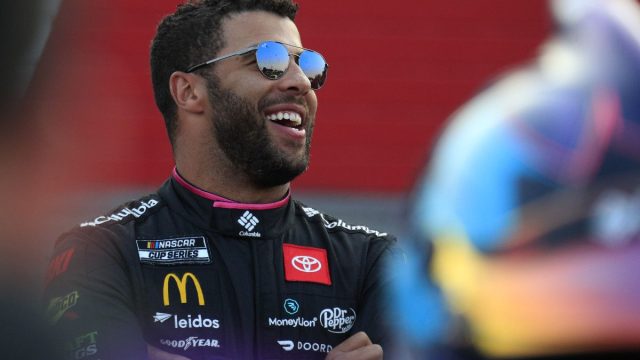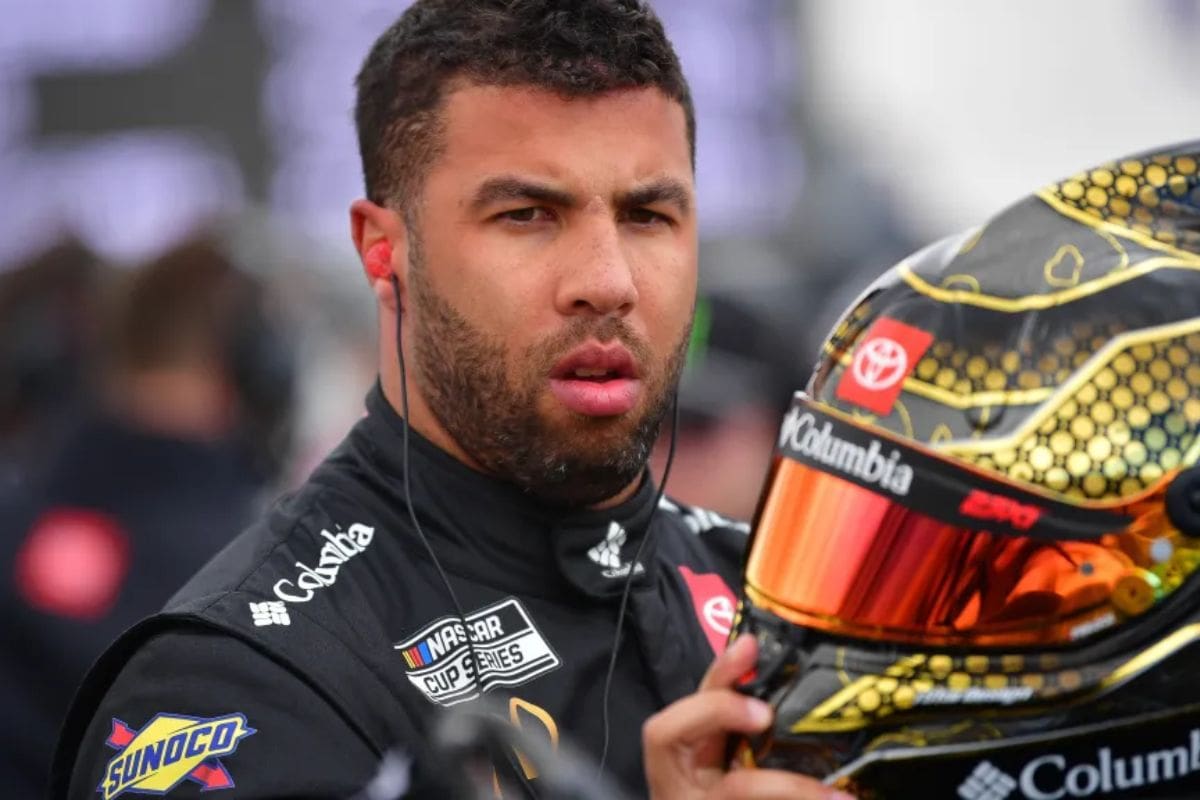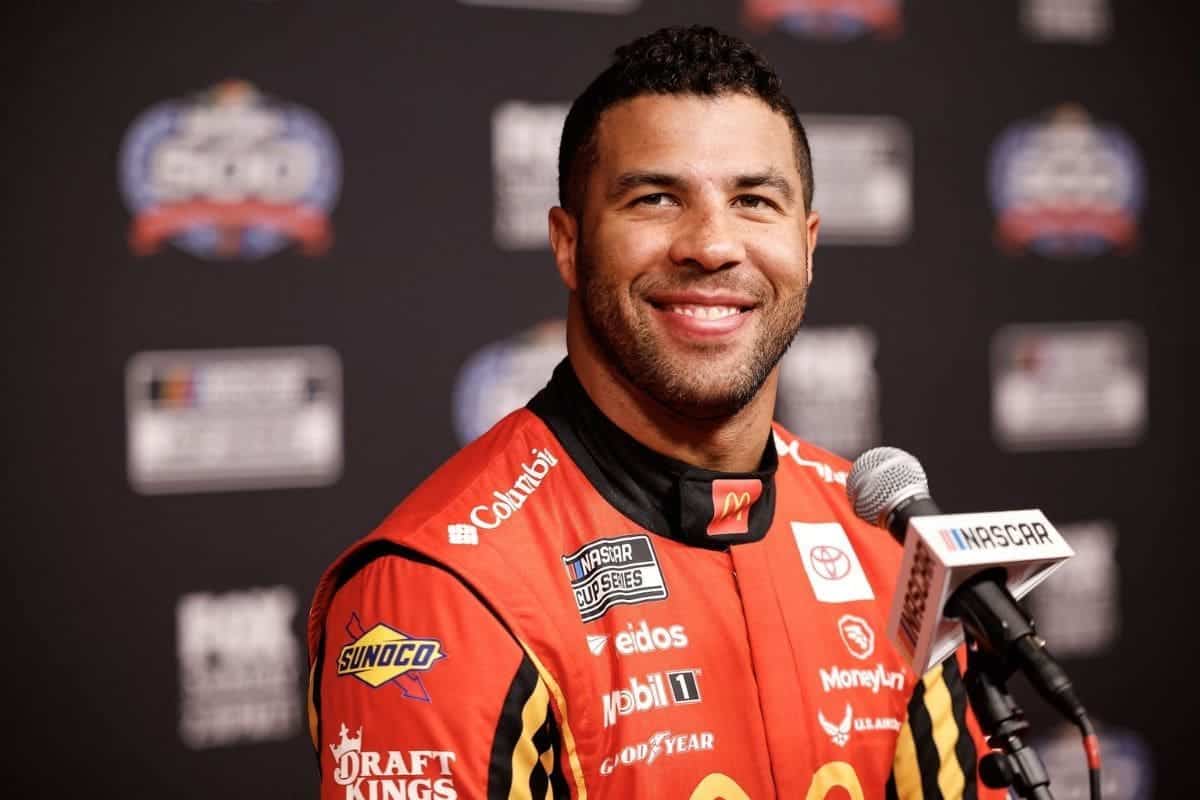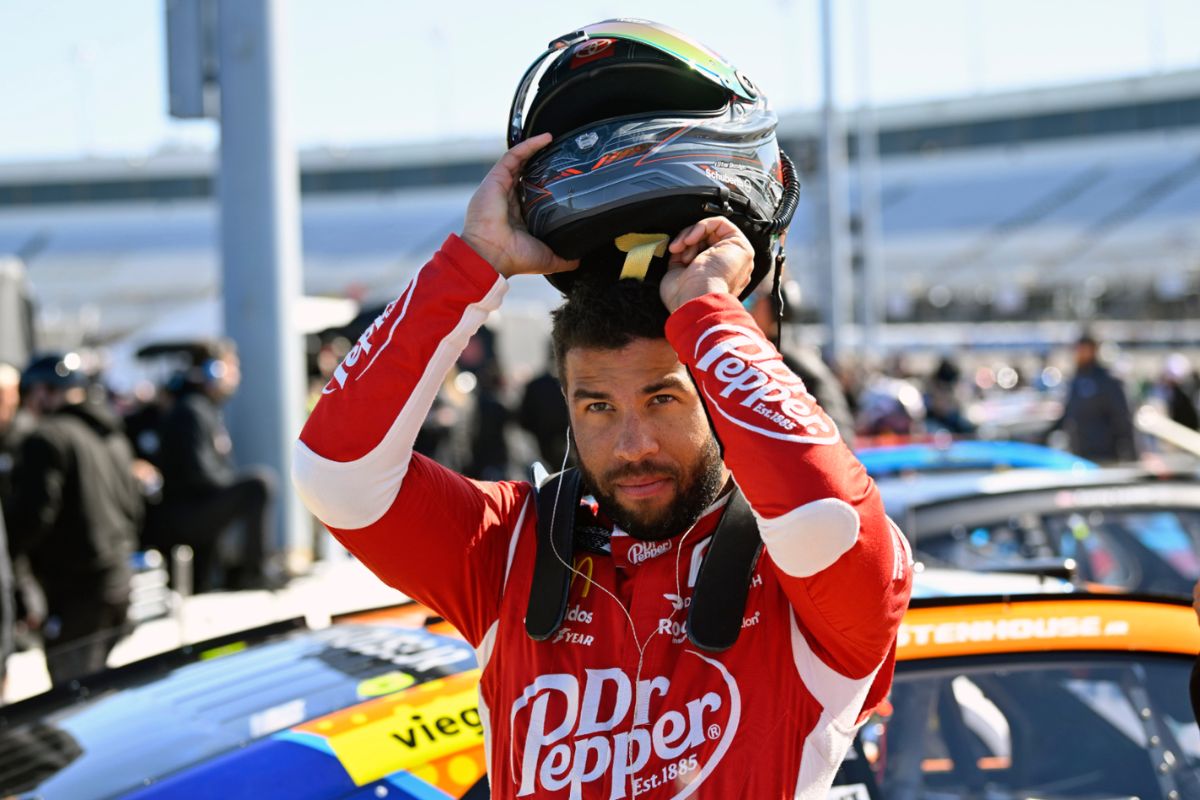Bubba Wallace Falls Short at All-Star Race: Bubba Wallace‘s performance in the NASCAR All-Star Race, where he climbed from 19th to finish sixth, serves as a proof of his strategic intelligence and driving proficiency. Despite falling short of the win, Wallace’s ability to navigate through a competitive field highlights his potential for future success in high-stakes scenarios. This P6 finish, while commendable, raises questions about his playoff prospects and the comparative performance of his team.
Key Highlights
- Bubba Wallace finished P6 after starting from 19th, showing significant progress but falling short of winning.
- Wallace showcased resilience and competitiveness, particularly against Joey Logano, but didn’t secure a top-five finish.
- Strategic planning involved following Kyle Larson closely, but it didn’t lead to a victory.
- Despite a commendable P6 finish, Wallace remains in sixteenth place in the standings with intense competition for playoff spots.
- Teammate Tyler Reddick outperformed Wallace, underscoring the need to close performance gaps within the team.
Race Performance and Results
Bubba Wallace demonstrated remarkable skill and resilience at the NASCAR All-Star race, finishing in P6 after starting in 19th position and overcoming a challenging early pitstop. Wallace’s performance was a testament to his racing expertise and strategic navigation. His ability to gain 13 places throughout the race, especially after being a lap down early on, highlights his competitive tenacity and adaptability under challenging circumstances.
From the start, Wallace faced an uphill battle. Starting from 19th position placed him deep in the pack, necessitating a calculated and aggressive approach to advance. By lap 125, he had impressively moved into the top 10, showcasing his ability to navigate through dense traffic efficiently. His pace during this phase demonstrated not only speed but also the precision required to avoid costly errors.
However, an early pitstop posed a significant challenge, putting Wallace a lap down. Despite this setback, he displayed exceptional resilience by clawing his way back into the race, a feat that highlights his mental fortitude and the proficiency of his pit crew. Wallace’s battle with Joey Logano, who dominated by leading 199 of the 200 laps, was a critical moment in the race, showing Wallace’s potential to compete.
As the race approached its climax, Wallace positioned himself in P6 with less than 35 laps remaining, yet found himself impeded by Ryan Blaney. Despite his best efforts, he was unable to overtake Blaney and advance further. Wallace’s P6 finish, though short of victory, remains a commendable achievement given the initial hurdles and the competitive nature of the event.
Expectations and Strategy
Despite the commendable P6 finish, Wallace entered the All-Star race with higher expectations and a strategic plan influenced by his previous year’s performance. Having secured a runner-up finish in the previous season, Wallace aimed to build on that momentum and capitalize on his experience. His strategy this year was particularly influenced by his encounter with Kyle Larson, who had outperformed him significantly last year. Wallace remarked prior to the race, indicating his intent to shadow Larson more closely in order to exploit any potential opportunities that could arise from Larson’s tactics.
“We were back there together last year and he [Kyle Larson] smoked my as*, he smoked our as* the whole race so I’m going to just ride in behind him and try to stay closer this time.” – wallace
Wallace’s strategy was rooted in learning from past experiences. Observing Larson’s technique and pace, which had been a decisive factor last year, Wallace sought to minimize the gap and thus improve his own competitive edge. The plan was to maintain proximity to Larson, thereby reducing the likelihood of being outpaced and increasing his chances of capitalizing on any openings.
However, executing this strategy in the environment of the All-Star race proved challenging. The dynamic nature of the race, combined with the caliber of competitors, demanded not just strategic foresight but also flawless execution under challenging circumstances.
Playoff Chances and Performance Analysis
Given the precariousness of his current standing, Wallace’s playoff chances appear increasingly precarious amidst a season marked by inconsistent performance and fierce competition. Sitting in sixteenth place with no race wins or stage victories, Wallace’s path to the playoffs is fraught with challenges. Although he has shown flashes of competitiveness, his overall performance metrics indicate a struggle to maintain a consistent top-tier presence.
- Race Wins and Stage Wins: Wallace has not secured any race or stage wins this season, a critical factor for playoff qualification. Without these victories, his ability to accumulate significant playoff points is severely hindered.
- Lead Laps and DNFs: Throughout the 13 Cup Series rounds, Wallace has led just 35 laps and encountered two DNFs (Did Not Finish), highlighting both his sporadic dominance and moments of misfortune. Leading laps is essential for both race strategy and psychological edge, and DNFs can greatly impact point standings.
- Top-Five Finishes: Despite the challenges, Wallace did achieve top-five finishes in three races—Daytona, Atlanta, and Martinsville. These performances highlight his potential, yet sporadic, ability to compete with the top drivers.
Team Performance Comparison
In contrast to Wallace’s struggles, teammate Tyler Reddick’s season performance has been markedly more successful, highlighted by a race win, two stage victories, and 305 laps led, placing him sixth in the championship standings. This stark difference in performance highlights a broader contrast within the team’s dynamics and resource allocation.
Reddick’s achievements this season are indicative of a well-executed strategy and consistent performance. The race win at Talladega and his stage victories suggest not only a strong race-day showing but also superior car setup and adaptability to varying track conditions. His ability to lead a substantial number of laps emphasizes a dominance in race pace and track positioning, elements crucial for championship aspirations.
In comparison, Wallace has encountered a series of disappointing finishes that have hindered his progress within the championship standings. The contrast between the two drivers’ performances may point to differences in driving style, race strategy, or even car performance setups. It raises relevant questions regarding intra-team support and whether both drivers are receiving fair resources and technical insights.
Moreover, Reddick’s success may have a mental impact, potentially exerting additional stress on Wallace to improve his performance. This internal team contrast can also affect team morale and cohesion, factors crucial to sustained success in racing environments.
Future Outlook
Projecting the future for Bubba Wallace, securing a race win appears paramount to improving his Playoff prospects, necessitating substantial performance improvements. The 23XI Racing driver has demonstrated flashes of potential, but consistency and peak performance are critical to converting those flashes into victories. Wallace’s current trajectory indicates that without a notable uplift in his race-day execution, his Playoff aspirations might remain unfulfilled.
- Qualifying Performance: Enhancing his starting positions can provide a strategic advantage, allowing Wallace to be in the mix from the onset of races. Improved qualifying can alleviate the burden of working through the pack and offer better control over race dynamics.
- In-Race Strategy: Fine-tuning pit stop strategies and making adaptive decisions during races can have a significant impact on outcomes. Wallace’s team needs to excel in real-time strategy adjustments, leveraging data and situational awareness to capitalize on every opportunity.
- Technical Collaboration: Strengthening the synergy between Wallace and his crew, particularly in the communication of car setups and adjustments, can lead to more efficient vehicle performance. Close collaboration with engineers and leveraging teammate insights can drive iterative improvements.
Wallace’s comparative performance with his teammate highlights the gap that must be bridged. While his P6 finish at the All-Star Race is commendable, it emphasizes the need for further refinement.
News in Brief: Bubba Wallace Falls Short at All-Star Race
Bubba Wallace’s performance at the NASCAR All-Star race, culminating in a P6 finish after starting from the 19th position, highlights his strategic expertise and driving skills. Despite not claiming victory, Wallace’s ability to navigate the field effectively showcases his potential in high-stakes racing scenarios.
This result contributes positively to his playoff prospects and reflects a strong team effort. Wallace’s performance positions him as a formidable competitor, suggesting promising future outcomes in upcoming races.
Our Reader’s Queries
Q. Is Bubba Wallace in the All-Star Race today?
A. Ty Gibbs and Bubba Wallace secured their spots in Sunday’s NASCAR All-Star Race by finishing 1-2 in the 100-lap Open event. Additionally, Noah Gragson earned a spot through the All-Star Fan Vote. With their inclusion, Ty Gibbs, Bubba Wallace, and Noah Gragson complete the 20-driver field for the All-Star Race at North Wilkesboro Speedway.
Q. What is Bubba Wallace’s record?
A. Wallace boasts six victories in the Craftsman Truck Series, achieving a significant milestone as the first African American since Hall of Famer Wendell Scott to secure a NASCAR race win. His historic triumph occurred at Martinsville in 2013, solidifying his place in racing history.
ALSO READ: Bubba Wallace Silences Chris Buescher’s Rant With Reality Check




